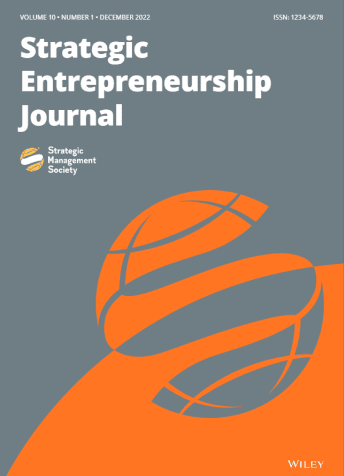By J Katherine Bahr
Public universities in the United States are facing a stark financial future. Enrollment is dropping at record rates. State funding decreased dramatically in the last decade. Student expectations for campus and classroom facilities are rising, and their tolerance for high tuition waning. Higher education has to do more with less, and that requires a reckoning on academic budgets.
The universities that are making it work in this intensely competitive environment have abandoned institutional financial norms and started following market leads. A new study published in the Strategic Management Journal (SMJ) shows that the common denominator among higher education winners is financial flexibility and that state government oversight often hampers budgeting success.
How Resource Allocation at Public Universities Currently Works
It’s an accepted norm in the business community that financial flexibility allows companies to respond more quickly to changing conditions, launch new initiatives, and lead the market. Economists and management scholars also mostly agree that highly centralized management is less effective, especially in rapidly changing environments and in knowledge-based industries. But these norms have never been embraced in one of the most pivotal knowledge-based industry, higher education.
Higher ed traditionally stands several steps back from market drivers, rooted in mission and tradition. Budgets are set on a yearly basis. Budget increases (and cuts) are often divided evenly among departments to avoid internal political turmoil. Sometimes whole segments are cut by government committees because of external political turmoil. University leaders struggle to enact change to financial management because of the myriad pressures from stakeholders, and the lack of executive fiat.
Budgeting Flexibility Could Mean Millions to University
Using more than two decades of data from the National Center for Education Statistics on the financial performance of U.S. public universities, researchers applied the concept of dynamic capabilities, creating a variable they call ‘deviation of expense ratio’ (DER), to quantify how easily universities can reallocate funds. DER measures the change in expense ratio across all budget segments from one year to the next.
When they compared DER to the university’s annual surpluses or deficits to determine its effect on financial performance, the absolute effect to university budgets was dramatic. In multiple cases, one deviation in DER could change a budget deficit into a surplus. That single point change could represent $10.02 million to the average university’s income, double the typical budget for scholarships.
When Government Gets Too Involved, Financial Flexibility Falters
The authors then segmented universities into low, medium, or high, levels of regulation based on their state governing board structures. Unsurprisingly, a large majority—1,136 universities—fell into the high regulation category, with 239 in low and 328 in medium. Using a complicated linear regression model of university financial performance that contextualized DER and governance — while controlling for variables like funding structure, endowments, and university size —researchers found that low governance slightly amplifies resource allocation flexibility’s effect, while high governance nearly halves it.
Researchers note that the result makes real-world sense: giving universities more autonomy allows them to open new revenue opportunities, which reduces their vulnerability to inadequate state funding. Too much regulatory and board level intervention can diminish the campus leadership team’s ability to respond to changes in the competitive environment and distract it from building positive points of difference.
The study doesn’t place all the onus of poor financial management at public universities on government oversight. It notes that for far too long, academic institutions neglected to adopt the management and organizational best practices that their own faculty teach. However, its findings might stand as a warning to state government boards that their intervention inhibits the major changes universities need to adopt to survive and even guide private companies that struggle with diverse stakeholders.
Find a full explanation of the study and how resource allocation flexibility and government oversight affect university financial performance in the full text, available in the Strategic Management Journal.
Based upon:
Heaton, S., Teece D., & Agronin E. (2022). Dynamic capabilities and governance: An empirical investigation of financial performance of the higher education sector. Strategic Management Journal. https://doi.org/10.1002/smj.3444.
J Katherine Bahr is a Knoxville-based freelance writer and content marketer with an advanced degree in creative writing and a decade working in publishing and marketing.




